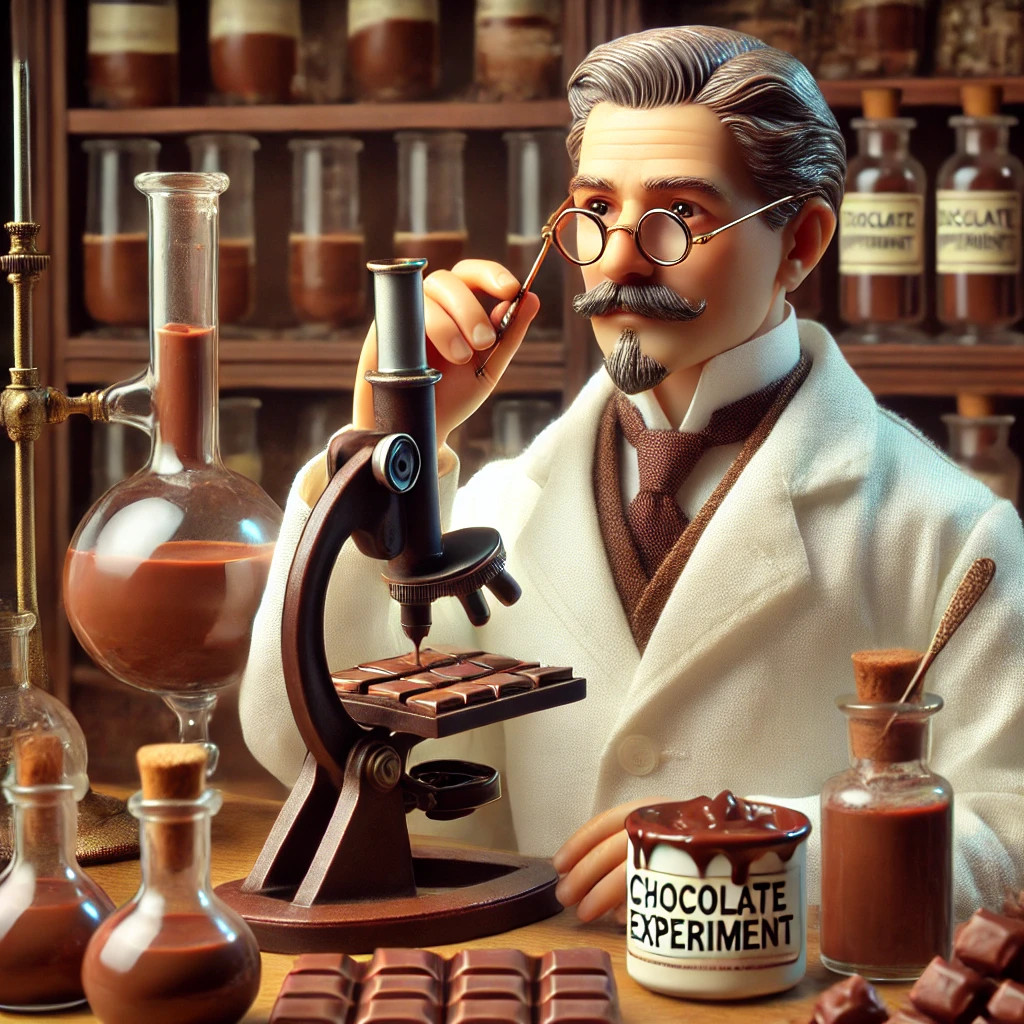 When we conjure the image of Louis Pasteur, visions of a determined scientist in a pristine white lab coat spring to mind, forever altering our understanding of microbiology.
When we conjure the image of Louis Pasteur, visions of a determined scientist in a pristine white lab coat spring to mind, forever altering our understanding of microbiology.
He's best known for pioneering pasteurisation and vaccines, and dispelling the myth of spontaneous generation.
Yet, amidst his extensive contributions, one might ponder, how does this iconic figure relate to cocoa, the cornerstone of chocolate, beloved worldwide?
Pasteur’s Breakthrough in Fermentation
In the 19th century, fermentation mystified many, with prevailing beliefs anchored in spontaneous generation—the notion that life sprang from the non-living.
Pasteur, a visionary French microbiologist, dismantled these misconceptions through rigorous experiments, illustrating that fermentation was not a matter of chance but a biological process orchestrated by micrcorganisms, especially yeast.
His discoveries were transformative, showing that yeast cells metabolise sugars into alcohol and carbon dioxide.
This insight not only revolutionised the brewing and baking industries but also laid the groundwork for microbiology, enriching our understanding of microbial roles in fermentation.
By demonstrating that these processes could be controlled by managing microorganisms, Pasteur opened new horizons for industries dependent on fermentation.
The Cocoa Connection: Fermentation's Crucial Role
The journey of cocoa from bean to bar is less known but fascinating. Harvested cocoa beans are encased in a sweet, sticky pulp that naturally draws yeast.
Here, Pasteur's findings resonate—yeast initiates fermentation by breaking down sugars into alcohol.
This stage is critical, as it significantly shapes the beans' flavour profile, which defines the distinctive taste of premium chocolate.
Post-yeast activity, acetic acid bacteria take the stage, converting alcohol into acetic acid. This transformation refines the beans’ flavour further, setting the stage for drying and subsequent chocolate production. Without Pasteur's insights into controlled biological processes, transforming bitter beans into luscious chocolate would remain an elusive art.
Beyond Chocolate: The Emergence of Cocoa Vinegar
Pasteur's legacy extends into innovative realms like cocoa vinegar production. Utilizing the pulp that cocoons the beans, this process mirrors traditional vinegar making—yeast ferments the sugars to produce alcohol, then acetic acid bacteria convert this alcohol into acetic acid. Cocoa vinegar, with its fruity, complex profile, mirrors its tropical origins and is carving a niche in culinary and mixology circles, adding a sustainable and exotic twist to dressings, marinades, and cocktails.click here for more Information
Pasteur’s Enduring Influence on Cocoa
Louis Pasteur’s explorations have indelibly influenced food and beverage sectors, but their reach extends beyond common knowledge.
The principles he unearthed underpin modern cocoa processing for chocolate and inventive by-products like cocoa vinegar.
By harnessing the intricate dance of yeast and bacteria, today’s chocolatiers, chefs, and cocoa farmers deliver high-quality, flavour-rich products that captivate palates globally.
Though Pasteur may never have relished fine chocolate or sampled cocoa vinegar, his scientific odyssey has profoundly impacted the cocoa industry.
His understanding of fermentation unlocked the potential for cocoa beans to metamorphose into diverse, beloved products.
Whether you're enjoying a chocolate-rich dessert or a cocktail laced with cocoa vinegar, it’s a tribute to the scientist who first unravelled the hidden science of fermentation.
Next time you indulge in these delights, spare a thought for Louis Pasteur, whose scientific legacy enriches our culinary experiences, one fermented bean at a time.
